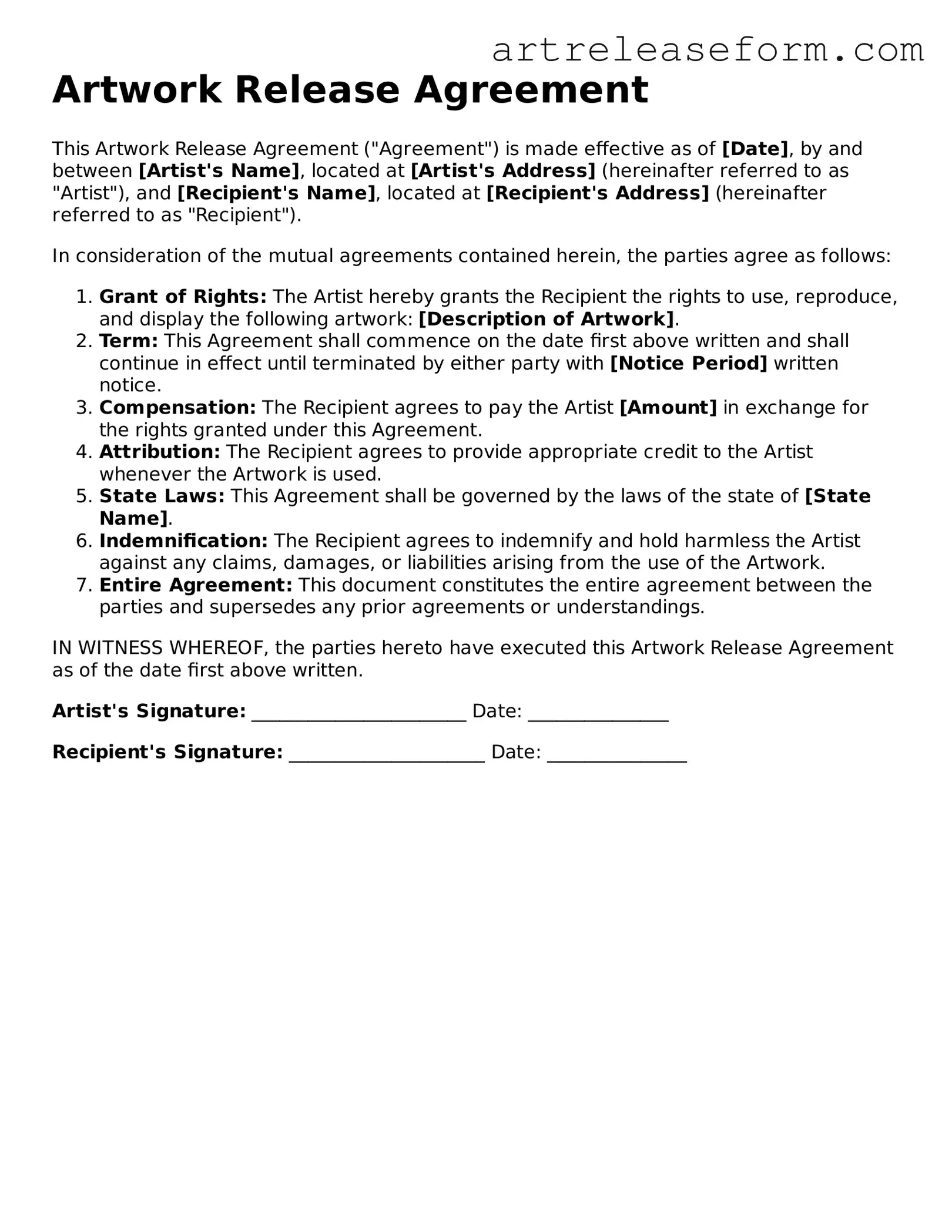Filling out an Artwork Release form can seem straightforward, but many individuals make common mistakes that can lead to complications down the line. One prevalent error is neglecting to provide complete contact information. It’s essential to include your full name, address, phone number, and email. Missing even one piece of this information can delay communication and create confusion regarding the ownership of the artwork.
Another frequent mistake is failing to specify the intended use of the artwork. The form should clearly outline how the artwork will be utilized, whether for commercial purposes, educational use, or personal display. Without this clarity, the artist may unintentionally lose control over how their work is distributed or reproduced.
Some people overlook the importance of reviewing the terms of the release. It’s crucial to read through the entire document before signing. This step ensures that you fully understand what rights you are granting and any obligations you may have. Skimming through the text can lead to misunderstandings and potential legal issues later.
Inaccurate descriptions of the artwork itself can also pose a problem. When filling out the form, make sure to provide a detailed description that includes the title, medium, and dimensions. This information helps to establish clear ownership and can prevent disputes about which specific piece is covered by the release.
Another mistake is not including the date of the agreement. The date is vital for establishing the timeline of rights granted and can be important in case of disputes. Always ensure that the date is clearly marked on the form to avoid any ambiguity.
Lastly, many individuals forget to keep a copy of the signed form for their records. Retaining a copy is essential for both parties involved. It serves as a reference point and can be invaluable if questions arise in the future about the agreement. Always make sure to store this document in a safe place.
